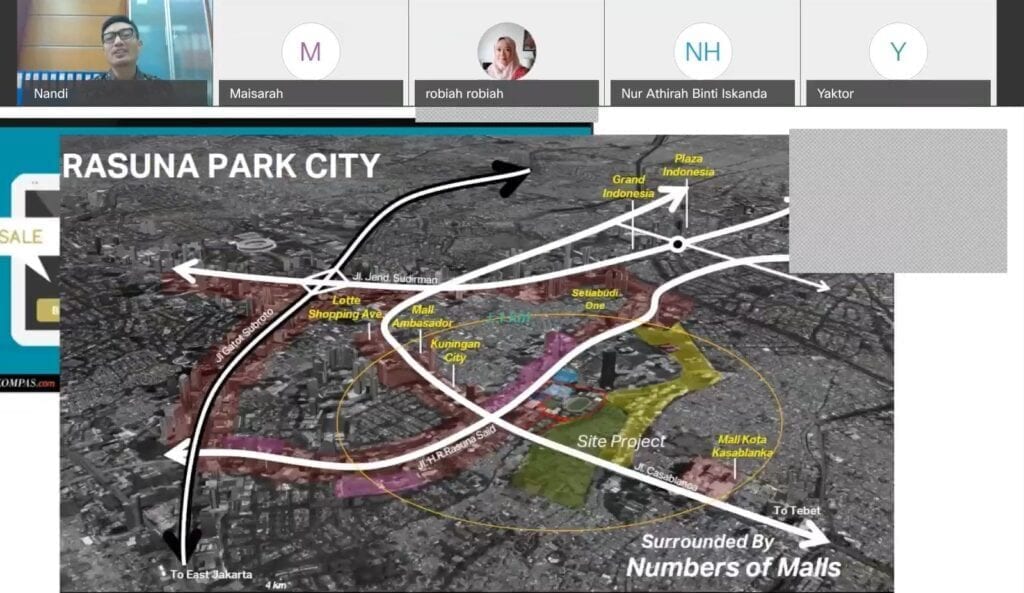For the first time, the undergraduate program of Land Administration and Development, Department of Real Estate, Faculty of Built Environment & Surveying, Universiti Teknologi Malaysia (UTM), had organized and hosted Online Global Classroom (OGC) program on 24th November 2020 (Tuesday) from 11.00 a.m. till 1.30 p.m. via Cisco Webex as shown in Figure 1.
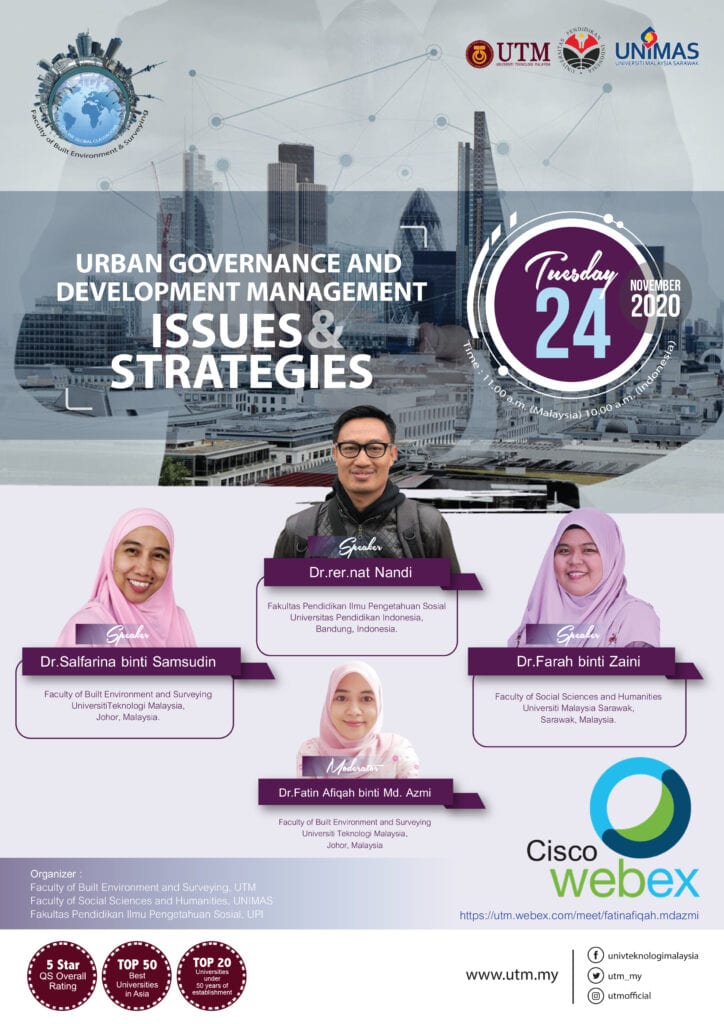
The welcoming speech by Dr. Fatin Afiqah Md. Azmi as the moderator of the program had highlighted the aim of the OGC as one of UTM initiatives to promote student mobility by conducting a virtual outbound and inbound mobility program sponsored by UTM International (UTMi). The program served as a platform for international and local academicians to share their insights on urban governance and development management practiced in Malaysia and Indonesia. The program began with a warm welcome and introduction of three credible speakers of the program and involved universities such as Universitas Pendidikan Indonesia (UPI), Universiti Malaysia Sarawak (UNIMAS), as well as UTM.
The first speaker, Dr. Salfarina Samsudin from UTM had talked about “Promoting Integrated Land Administration for Urban Governance and Development Management. She gave input on how to make cities and human settlements inclusive, safe, resilient, and in line with Sustainable Development Goal (SDG) number 11. She started her talk with the urban issues and challenges since the year 2000 including the rapid urbanisation, mixed land use, and development of infrastructures and basic services.
From the issues that have arisen, we have to tackle the seven characteristics of good urban governance as promoted by UN-HABITAT namely sustainability, subsidiarity, equity, efficiency, transparency and accountability, civic engagement and citizenship, and security as well. On this basis, Dr. Salfarina had come out with the idea of integrating the ecosystem of land administration system in order to enhance the Malaysian urban governance as shown in Figure 2.
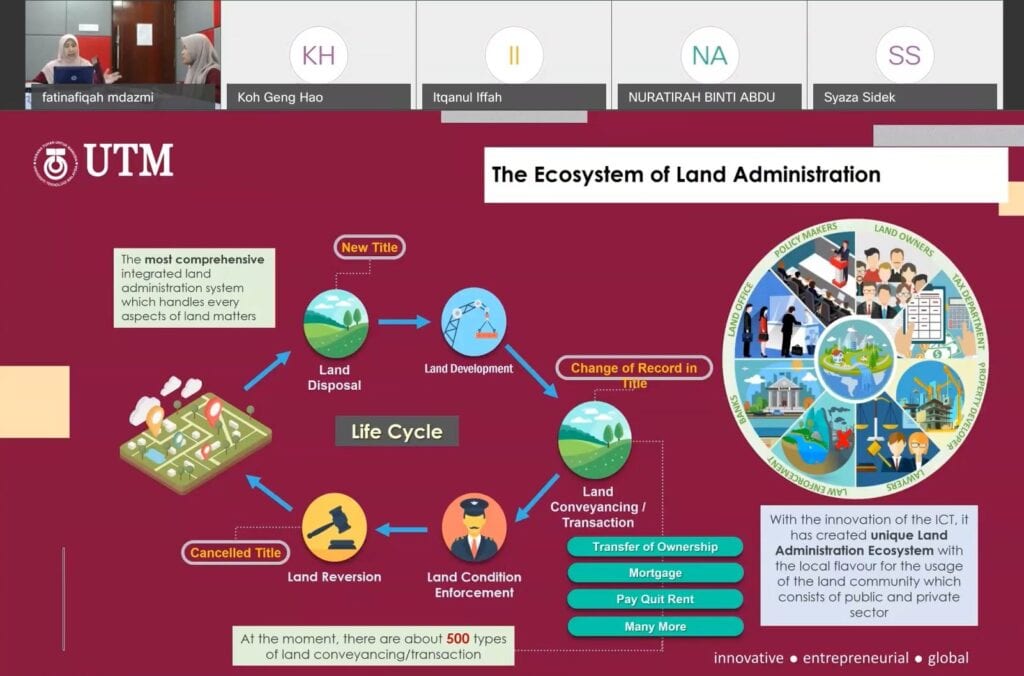
Additionally, Dr. Salfarina had extensively explained the real practice of a unique land administration system (LAS) in Malaysia starting from 1980 until 2020. The LAS was divided into two phases: development expenditure budget and public-private partnership. Starting from the year 1980, LAS has introduced the land revenue collection system called SPHT system. Next in 1995, LAS has upgraded into Computerized Land Registration System or known as SPTB. LAS has continuously evolved into Modernized Land Administration System (SPPT) in the year 2002 and it took two years for SPPT to rebrand as e-Tanah in 2004.
This e-Tanah was first implemented in Penang state in 2005, followed by Negeri Sembilan and Malacca in the year 2009. On one hand, LAS in Malaysia is in the public-private partnership phase since 2014 until now whereby the implementation of e-Tanah was expanded to Wilayah Persekutuan Kuala Lumpur and Perak (see Figure 3). Finally, she ended her session by promoting a procedure of e-Tanah integration with the Malaysian National Registration Department.
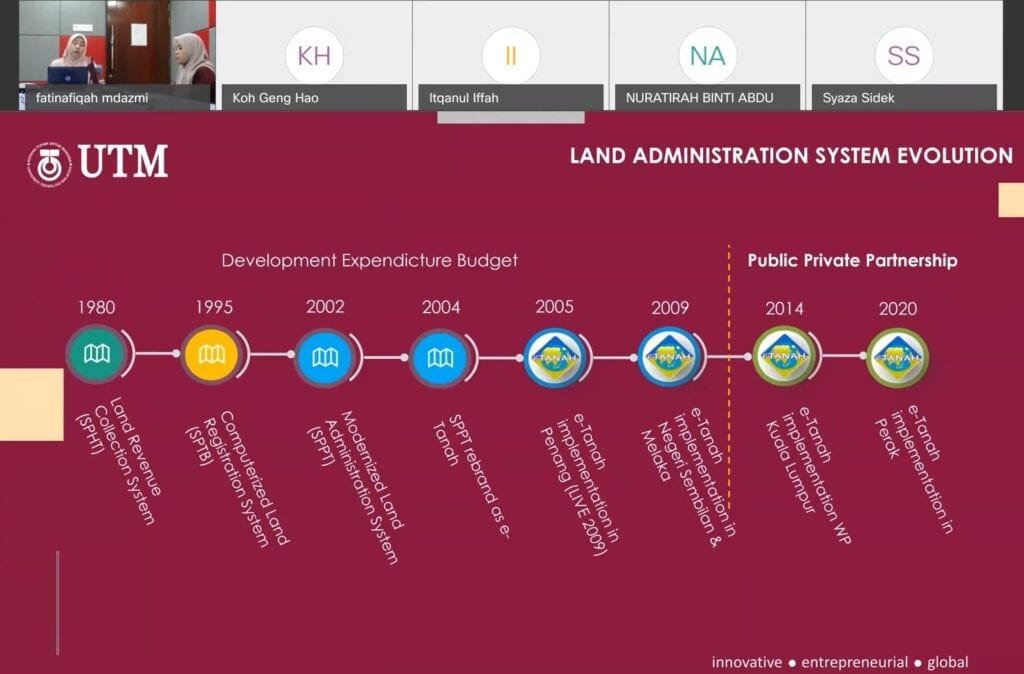
The second speaker, Dr. Nandi from UPI shared his insight on “Millennials and Urban Land Development Management”. He emphasised three aspects namely the understanding of millennials as the main stakeholders, millennials and urban planning as well as the urban land development and management that refers to the Indonesian landed housing demand. Millennials in the view of Dr. Nandi was born between 1980 to 2000 whereby they have a set of priorities and expectations sharply different from previous generations.
In the recent time, the housing market for Indonesian is specifically on housing millennials that characterized by the tech-savvy millennials; healthy, socialised, and environment-conscious lifestyles; economy, co-working space, communal space, Uber, and Air BnB trends. He also shared the real case study of urban land millennials in Rasuna Park City, Jakarta, Indonesia as depicted in Figure 4. This place is surrounded by a number of malls; for instance, Mall Kota Kasablanka, Setiabudi One, Kuningan City, Mall Ambasador, Lotte Shopping Ave, Grand Indonesia, and Plaza Indonesia that can attract various millennials to come.
On one hand, Indonesian millennials have started practising ‘sharing economy’, a situation where millennials are no longer interested to buy assets but they are looking for a new set of services that provide access to products without the burdens of ownership. Hence, Dr. Nandi stressed the developer has to come out with a strategic plan to build affordable housing for millennials.
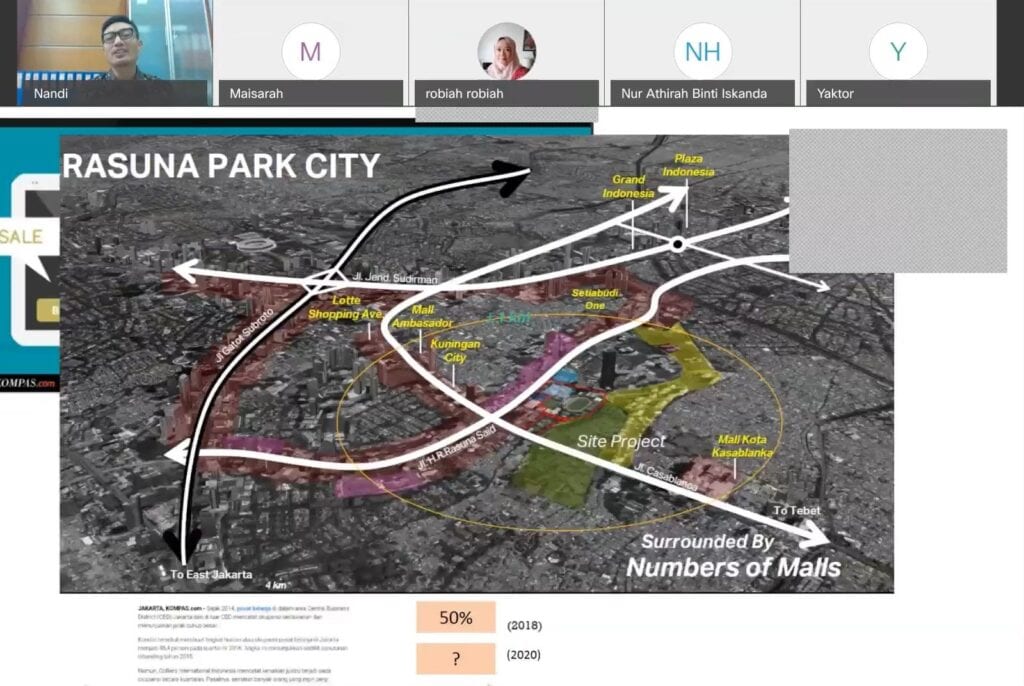
The third speaker was Dr. Farah Zaini from UNIMAS and she elaborated more on “Land Rights: Connecting Land and Urban Development”. Her first slide illustrated the statistics of the world’s populations who live in the urban areas whereby it is expected that by 2030, 60% or approximately five billion people will live in a city. She alleged that the failure to clarify land rights and fix distorted land policies could increase the property values and making them potentially unaffordable to the urban poor and settlements. Likewise, if the land rights is insecure, the communities can lose access to their land.
Besides, an overlapping land tenure system in the urban areas could inhibit the private sector to utilize the land at the highest and best use. In fact, lack of enforcement on the statutory and customary laws, the land rights are ambiguous in terms of taxation, compensation, and land use coordination. Hence, she had comprehensively discussed the role of land rights in urban development including the secure land rights that are essential for private sector development and job creation, as well as the secure indigenous peoples’ rights. She also proposed on how to tackle various disputes on land rights. For example, by formalizing the land tenure using fit-for-purpose approach, land re-adjustments to increase the value of properties and land use, and lessons learned from the success and failure case studies in the land tenure reforms (see Figure 5).

At the end of the program, there was a question and answer session between the speakers and participants. The moderator opined that the program had provided a fruitful discussion for clearing the doubts that were supported by the thought-provoking questions. The program was attended by more than 300 participants where 57% from Universiti Teknologi Malaysia (UTM), almost 37% from Universitas Pendidikan Indonesia (UPI), 5% from Universiti Malaysia Sarawak (UNIMAS) and 1% from London South Bank University, United Kingdom. The participants were among the undergraduate and postgraduate students, academic staff and government agencies staff as illustrated in Figure 6.

On behalf of the organizer, we would like to express our gratitude to the speakers, moderator, and most importantly, to all participants for joining this Online Global Classroom 2020. We hope that the sharing sessions can also provide an effective way of communicating the link between theory and practices, in addition to an opportunity to learn alternative ways of suggesting solutions for any disputes related to urban governance and development.
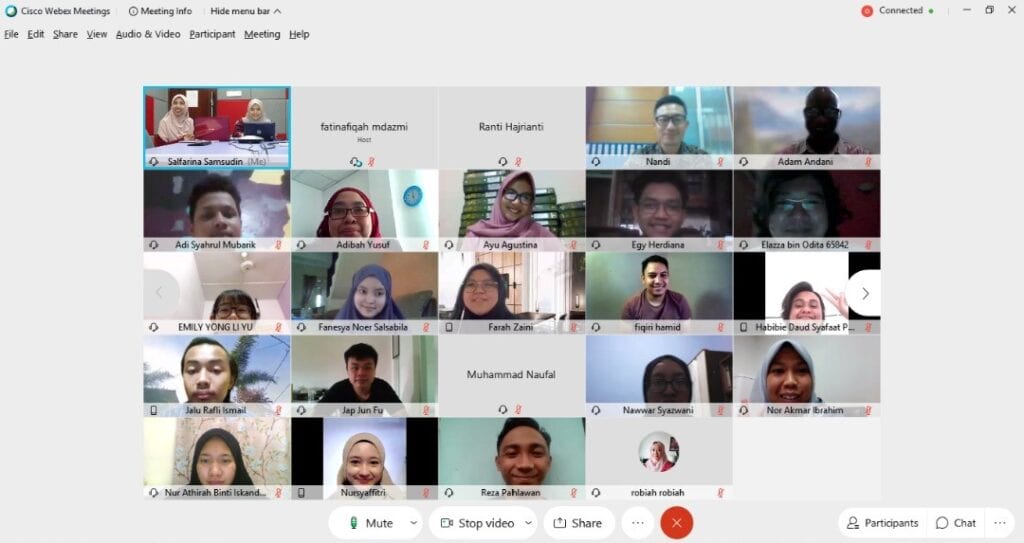
Prepared by:
Dr. Fatin Afiqah Md. Azmi, Dr. Mohd Nadzri Jaafar, Dr. Zuhaili Mohamad Ramly & Dr. Salfarina Samsudin.
Faculty of Built Environment & Surveying, Universiti Teknologi Malaysia.

